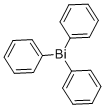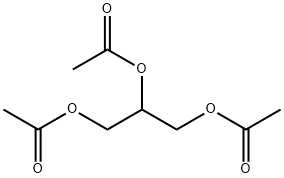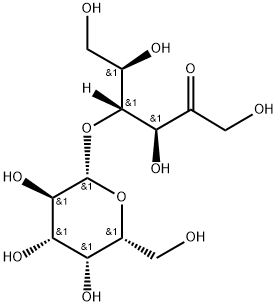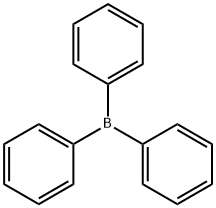Triphenyltin acetate
- CAS NO.:900-95-8
- Empirical Formula: C20H18O2Sn
- Molecular Weight: 409.07
- MDL number: MFCD00014977
- EINECS: 212-984-0
- SAFETY DATA SHEET (SDS)
- Update Date: 2024-12-18 14:15:30

What is Triphenyltin acetate?
The Uses of Triphenyltin acetate
Triphenyltin Acetate is an organotin compound. Triphenyltin Acetate much like its hydroxide analogue is used as a fungicide and antifeeding compound for insect control. Recent studies show that Triphenyltin Acetate may have adverse effects on the reproductive and immune systems and may disrupt the endocrine system.
The Uses of Triphenyltin acetate
Fentin is a non-systemic fungicide with protective and curative action. It is used to control early and late blight in potatoes and a range of diseases in vegetables, sugar beet, peanuts, wheat, coffee, cocoa and pecans. It is also used to control algae and snails in rice fields. Fentin has previously been used as an antifoulant in marine paint.
Definition
ChEBI: An organotin compound that is the O-acetyl derivative of triphenyltin hydroxide. A fungicide used to control blights on potatoes, leaf spot diseases on sugar beet and anthracnose on beans.
General Description
A white crystalline solid. Melting point 123-131°C (253-268°F). Used as a fungicide, algaecide and molluscicide. Controls early and late blight on potatoes.
Air & Water Reactions
Slowly oxidized, hydrolyzed when exposed to air and moisture.
Reactivity Profile
ACETOXYTRIPHENYLSTANNANE is subject to decomposition when exposed to air, light and moisture [EPA, 1998].
Health Hazard
Very toxic, irritant to skin.
Fire Hazard
Avoid air, light and moisture.
Safety Profile
Poison by ingestion, intraperitoneal, intravenous, and subcutaneous routes. Moderately toxic by skin contact. Questionable carcinogen with experimental neoplastigenic data. An experimental teratogen. Other experimental reproductive effects. A fungicide and algicide used as a wood preservative. When heated to decomposition it emits acrid smoke and Sn' fumes. See also TIN COMPOUNDS.
Metabolic pathway
Fentin is degraded in soil and other biological media to give inorganic tin via the di- and mono-phenyltin compounds; often the resulting benzene is liberated. An extensive review on the metabolism and fate and behaviour of triphenyltin and its degradation products was published by Bock (1981). Fentin hydroxide has been the subject of an evaluation by the Pesticide Safety Directorate of UK MAFF (PSD, 1990).
Degradation
Fentin acetate is stable when dry but easily hydrolysed to fentin hydroxide in the presence of water. It is unstable in acids and alkalis (DT50 <3 hours at pH 5, 7 or 9; 22 °C) and ionises to the triphenyltin cation. Triphenyltin compounds are converted rapidly and quantitatively into the hydroxide by alkali. Diphenyltin compounds (2) (see Scheme 1) react similarly but the hydroxide quickly loses water forming the oxide. Diphenyltin chloride initially hydrolyses to (C6H5),Sn(OH)Cl which forms compound 3 when dissociated and then the oxide is formed via dimeric intermediates. Diphenyltin compounds also split off phenyl groups as benzene (4) under the influence of water, acids or bases. Monophenyltin compounds (5) are also converted by alkali into the hydroxide which immediately loses water to form phenylstannonic acid (C6H5SnOOH) (6). In aqueous solution and at room temperature, triphenyltin compounds decompose at a slow rate, losing phenyl groups as benzene. The acetate is decomposed by sunlight and atmospheric oxygen. Phenyltin compounds are slowly decomposed by sunlight and more rapidly by UV light to give inorganic tin via the di- and mono-phenyltin compounds (PM; Bock, 1981).
Properties of Triphenyltin acetate
| Melting point: | 118-122°C |
| Boiling point: | 60 °C |
| Density | 1.55 |
| vapor pressure | 1.9 x 10-3 Pa (60 °C) |
| storage temp. | APPROX 4°C
|
| solubility | Chloroform (Slightly) |
| form | Powder |
| color | white |
| Water Solubility | 28 mg/L (20 ºC) |
| Hydrolytic Sensitivity | 7: reacts slowly with moisture/water |
| Merck | 14,9745 |
| CAS DataBase Reference | 900-95-8(CAS DataBase Reference) |
| NIST Chemistry Reference | Triphenyl tin acetate(900-95-8) |
| EPA Substance Registry System | Fentin acetate (900-95-8) |
Safety information for Triphenyltin acetate
| Signal word | Danger |
| Pictogram(s) |
 Corrosion Corrosives GHS05  Skull and Crossbones Acute Toxicity GHS06  Health Hazard GHS08  Environment GHS09 |
| GHS Hazard Statements |
H301:Acute toxicity,oral H311:Acute toxicity,dermal H315:Skin corrosion/irritation H318:Serious eye damage/eye irritation H330:Acute toxicity,inhalation H335:Specific target organ toxicity, single exposure;Respiratory tract irritation H351:Carcinogenicity H361:Reproductive toxicity H371:Specific target organ toxicity, single exposure H372:Specific target organ toxicity, repeated exposure H400:Hazardous to the aquatic environment, acute hazard H410:Hazardous to the aquatic environment, long-term hazard |
| Precautionary Statement Codes |
P201:Obtain special instructions before use. P260:Do not breathe dust/fume/gas/mist/vapours/spray. P273:Avoid release to the environment. P280:Wear protective gloves/protective clothing/eye protection/face protection. P320:Specific treatment is urgent (see … on this label). P330:Rinse mouth. P304+P340:IF INHALED: Remove victim to fresh air and Keep at rest in a position comfortable for breathing. P305+P351+P338:IF IN EYES: Rinse cautiously with water for several minutes. Remove contact lenses, if present and easy to do. Continuerinsing. P405:Store locked up. |
Computed Descriptors for Triphenyltin acetate
New Products
Tert-butyl bis(2-chloroethyl)carbamate (S)-3-Aminobutanenitrile hydrochloride N-Boc-D-alaninol N-BOC-D/L-ALANINOL N-octanoyl benzotriazole 4-Hydrazinobenzoic acid 3,4-Dibenzyloxybenzaldehyde Electrolytic Iron Powder 1,1’-CARBONYLDIIMIDAZOLE R-2-BENZYLOXY PROPIONIC ACID 4-HYDROXY BENZYL ALCOHOL 1,1’-CARBONYLDI (1,2-4 TRIAZOLE) S-2-CHLORO PROPIONIC ACID (2-Hydroxyphenyl)acetonitrile 4-Bromopyrazole 5-BROMO-2CYANO PYRIDINE 5,6-Dimethoxyindanone 5-broMo-2-chloro-N-cyclopentylpyriMidin-4-aMine 3-(Hydroxymethyl)benzoate N-Boc-2-chloroethylamine 1-Bromo-2-methoxy-3-nitrobenzene N-Methyl-3-cyclopenten-1-amine 2-Bromo-3-hydroxybenzaldehyde 1H-indazole-5-carboxamideRelated products of tetrahydrofuran








You may like
-
 7441-43-2 98%View Details
7441-43-2 98%View Details
7441-43-2 -
 1260741-78-3 6-Bromo-3-iodo-1-methyl-1H-indazole 98%View Details
1260741-78-3 6-Bromo-3-iodo-1-methyl-1H-indazole 98%View Details
1260741-78-3 -
 (3-Benzyloxypropyl)triphenyl phosphonium 98%View Details
(3-Benzyloxypropyl)triphenyl phosphonium 98%View Details
54314-85-1 -
 4-bromo-3,5-dimethylbenzenesulfonyl chloride 1581266-79-6 98%View Details
4-bromo-3,5-dimethylbenzenesulfonyl chloride 1581266-79-6 98%View Details
1581266-79-6 -
 2490430-37-8 98%View Details
2490430-37-8 98%View Details
2490430-37-8 -
 N-(5-Amino-2-methylphenyl)acetamide 5434-30-0 98%View Details
N-(5-Amino-2-methylphenyl)acetamide 5434-30-0 98%View Details
5434-30-0 -
 124371-59-1 98%View Details
124371-59-1 98%View Details
124371-59-1 -
 53857-52-2 98%View Details
53857-52-2 98%View Details
53857-52-2